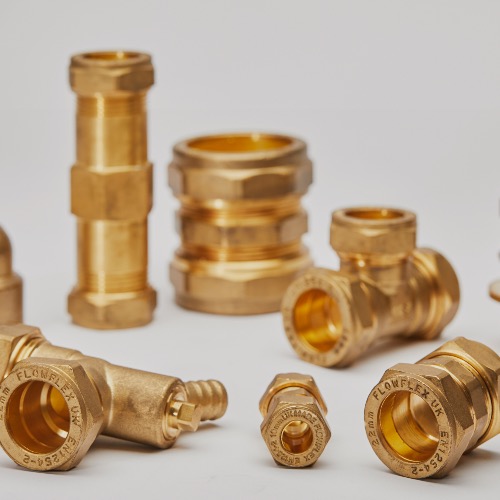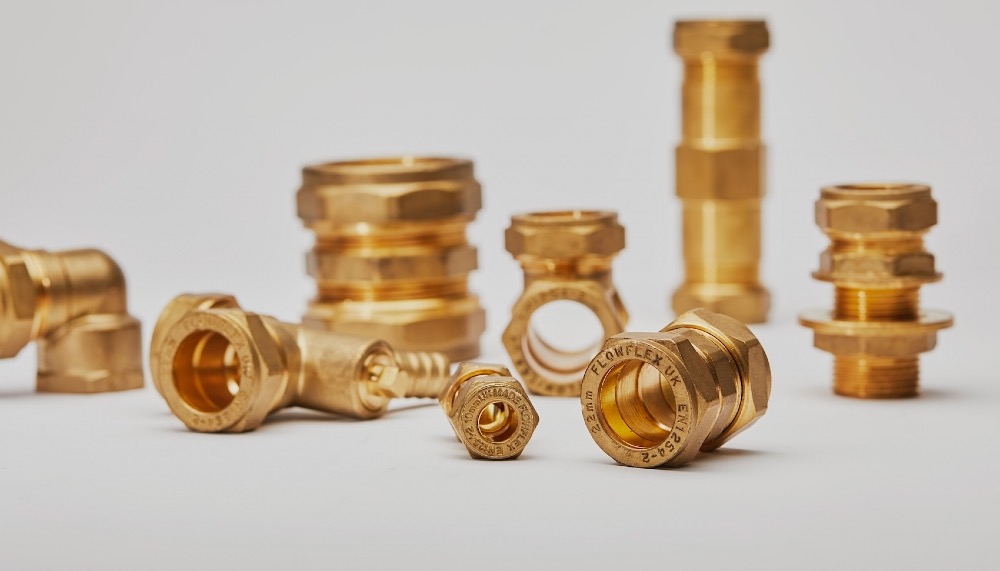Welcome to the first post of our Ultimate Guide to Compression Fittings series, where we're covering all you need to know about Compression Fittings. This article will focus on understanding the basics of compression fittings; their history and their role in plumbing.
What Are Compression Fittings?
Compression fittings are a type of connection used in plumbing and electrical conduit systems to join two tubes or thin-walled pipes together. They are comprised of three main components: a nut, a compression olive, and a compression fitting body. When the nut is tightened, it compresses the olive against the pipe, creating a tight waterproof seal. Hence the name Compression Fitting.
As you can see in the image below, there are three parts to a compression pipe joint; the Nut, the Olive and the Body of the Fitting.

The History of Compression Fittings
The exact origin of Compression Fittings is not clear, but it's safe to say they have been used by many plumbers over dating back generations. As time has passed, these fittings have undergone continuous evolution and improvement. The various materials like brass and steel have been employed and refined to enhance their durability and efficiency also.
Among these choices of material, brass compression fittings have garnered significant popularity. Their ability to be manufactured in large quantities while maintaining robustness and resistance to high temperatures and pressures has contributed to their widespread use. They are also 100% reusable or recyclable which contributes to our sustainability goals. As a result, brass compression fittings have become a reliable choice for many applications, standing the test of time with their enduring quality and performance.
Why Use Compression Fittings?
Compression fittings offer several advantages that make them a popular choice in various plumbing and piping applications:
Easy To Install: One of the primary advantages of compression fittings is their straightforward installation process. You just need a spanner to tighten the fittings securely, making them accessible for both DIY enthusiasts and easy for professional plumbers. There is no need for specialised skills.
Heat Free Connections: This is a big one. Unlike other types of fittings, Compression fittings don't require the use of heat to make the connection. You just need a spanner. This makes them safer to install an also suitable for safety on large scale construction sites.
Demountable / Reusable: Another notable advantage of compression fittings is their reusability. Unlike soldered or glued connections, compression fittings can be disassembled and reassembled without damaging the fittings or pipes. Simply replace the olive and you still have a great plumbing fitting, ready for reuse. This feature allows for easy adjustments, replacements, or modifications in the future, saving time and resources.
Versatility: Compression fittings can be used with various materials, including copper, brass, plastic, and stainless steel pipes. This adaptability makes them suitable for a wide range of plumbing systems, accommodating different pipe types without compromising performance.
Durability: Brass is known for its exceptional durability. It's strong, able to withstand high temperatures and pressures, and can last for years without needing replacement. This makes compression fittings ideal for applications where water integrity and leak prevention are crucial, providing peace of mind for homeowners and businesses alike.
Corrosion Resistance: One of the biggest challenges in any plumbing or heating system is corrosion. However, brass is naturally resistant to corrosion, which means it can withstand the rigours of most plumbing and heating applications without degrading over time.
All of this makes brass compression fittings an ideal choice for both domestic and commercial applications.
Frequently asked questions
What are compression fittings?
Compression fittings are a type of connection used in plumbing and electrical conduit systems to join two tubes or thin-walled pipes together. They consist of three main components: a nut, a compression olive, and a compression fitting body. When the nut is tightened, it compresses the olive against the pipe, creating a tight waterproof seal.
What are the main components of a compression fitting?
The three main components of a compression fitting are a nut, a compression olive, and a compression fitting body. When the nut is tightened, it compresses the ferrule against the seat, creating a tight waterproof seal.
Why are brass compression fittings popular?
Brass compression fittings are popular due to their ability to be manufactured in large quantities while maintaining robustness and resistance to high temperatures and pressures. They are also 100% reusable or recyclable, contributing to sustainability goals. They are durable, reliable, and have stood the test of time in terms of quality and performance.
What are the advantages of using compression fittings?
Compression fittings are easy to install, don't require heat for connections, are reusable, versatile, durable, and resistant to corrosion. They can be used with various materials, including copper, brass, plastic, and stainless steel pipes, making them suitable for a wide range of plumbing systems.
Can compression fittings be reused?
Yes, unlike soldered or glued connections, compression fittings can be disassembled and reassembled without damaging the fittings or pipes. Simply replace the olive, and the fitting is ready for reuse. This feature allows for easy adjustments, replacements, or modifications in the future, saving time and resources.
What materials can be used with compression fittings?
Compression fittings can be used with various materials, including copper, brass, plastic, and stainless steel pipes. This adaptability makes them suitable for a wide range of plumbing systems, accommodating different pipe types without compromising performance.
Any more questions?
If you have any queries or questions about the products we sell, or even your next project, give us a shout! We'll try our best to give you a hand.

